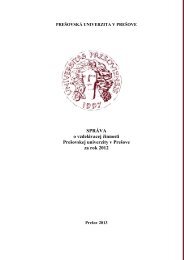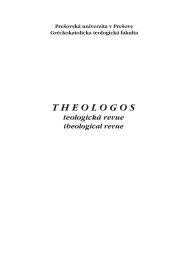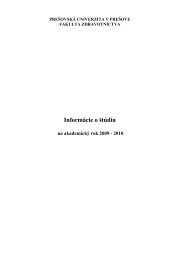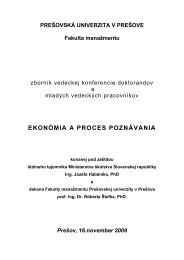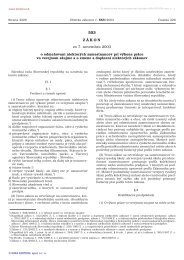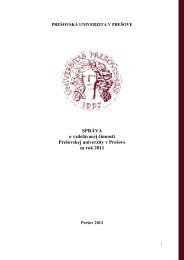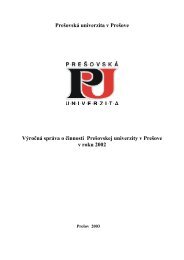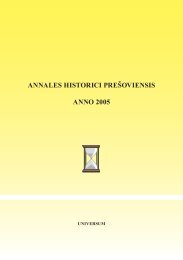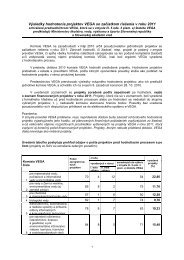T H E O L O G O S - Prešovská univerzita v Prešove
T H E O L O G O S - Prešovská univerzita v Prešove
T H E O L O G O S - Prešovská univerzita v Prešove
You also want an ePaper? Increase the reach of your titles
YUMPU automatically turns print PDFs into web optimized ePapers that Google loves.
Bożena Drzewicka<br />
The Asian approach excludes any endeavour to achieve an only truth<br />
and to present it as universal. This is especially characteristic of China,<br />
where no one perceives a contradiction in a simultaneous or subsequent<br />
choice of Confucianism, Taoism or Buddhism. Such situations are<br />
possible as, according to R. Kapuściński, “a great asset of the Chinese<br />
ideology is its flexible and recounciling syncretism, resulting in the<br />
integration of different schools, views and attitudes, whereby no harm<br />
has ever been done to any core of a particular school. (…) but in the<br />
event a compromise could be reached and followed by some form<br />
of coexistence as well as by mutual contributions. 8 ”<br />
In that civilization, a simultaneous functioning of many equal truths is<br />
accepted. National development strategies substitute the “imperialist universalism”,<br />
which the Chinese condemn 9 . The national strategies are usually<br />
partial and concentrate on concrete issues. This leads to an unambiguous<br />
cultural decentralization and a lack of interest in the binary model<br />
reflected by the “centre-outskirts” system. Thus the adoption of the principles<br />
of democracy or of the human rights can be accepted as a “useful<br />
solution” in a partial situation. However, this does not result in a creation<br />
of a sublime doctrine defended by the nation or the society. Confrontation<br />
symptoms are typical of such perspectives. No similar situation<br />
would be observed wherever the constitution is the guarantee of a “Charter<br />
of Rights”, which is a fact in the case of Japan 10 . There is, though, an<br />
evident difference between the constitution statements and the reality. As<br />
a result, some façade institutions exist and are not objected to.<br />
The Asian family structures were especially interested in “internal<br />
affairs”. This interest contributed to a culture of peace, which concentrated<br />
on human life. Such situation affected politics and the societies, as<br />
well as the normative activity of the states. As a result, concrete and really<br />
profitable measures were preferred. No sublime declarations or appeals<br />
proved necessary. Nor were there any catalogues of justified and universal<br />
rights, comparable to those known in Europe since the 18th century.<br />
Thus, the Enlightenment way of thinking remained unknown in Asia as<br />
did the European dichotomous divisions within each area of life. The origins<br />
or the organization of the Western world did not interest too many<br />
people in Asia, and this lack of interest was reciprocated. However, in the<br />
8<br />
R. Kapuściński, Podróże z Herodotem, Kraków 2004, p. 70-71.<br />
9<br />
For a detailed discussion see: A. Dirlik, The postcolonial aura: third world criticism in<br />
the age of global capitalism, “Critical Inquiry” 1994, No 20, p. 329-55.<br />
10<br />
Cf. Y. Okudaira, The Australian and Japanese Constitution, in: P. Drysdale (ed.): H.<br />
Kitaoji, Japan and Australia, Australian National University Press, Canberra, 1981, p.<br />
170-185; Y. Okudaira, Ochrona praw człowieka w Konstytucji Japonii, in: Ochrona<br />
praw człowieka w świecie, ed. by L. Wiśniewski, Bydgoszcz – Poznań 2000, p. 369-371.<br />
24



